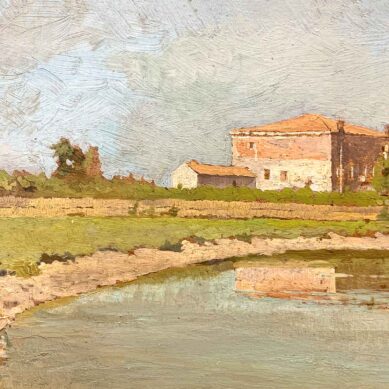You searched
Painter
Afro Basaldella
Are you interested in the sales or the purchase of his artworks?
We buy works of this artist
and of other painters and sculptors from the 16th century to the first half of the 20th century
The Berardi gallery offers a free and without obligation service for evaluation of ancient and modern art . To find your way in the art market, very complex and full of nuances, it is better to rely on a professional consultant who can answer fast and concretely to your needs. The clarity of the answers will resolve effectively the need to estimate or sell an asset.
Contact us immediately without commitment
Answers also in 24 hours:
Afro Basaldella
Afro Basaldella
Afro Basaldella studied at the Liceo Artistico in Venice from 1926 to 1931. In 1928, while still a student, he took part in the Exhibition of the Friuli School of the Avant-garde in Udine, with Still Life and From the Rooftops. In 1929 he won a scholarship from the Fondazione Artistica Marangoni in Udine and decided to go on a study trip to Rome with his brother Mirko.
They immediately became acquainted with the Roman School: they both became friends with Corrado Cagli, Scipione and Mario Mafai. Moving to Milan, he met Arturo Martini, introduced by his brother Mirko, who was already a pupil in his studio. At this point Afro began to exhibit his first works at the Galleria del Milione, including Natura morta con pesci (Still Life with Fish), L’ultimo circo (The Last Circus), Pulcinella (Punchinello) and Uomo che si asciuga (Man drying himself).
In 1934 he returned to Rome and became close to Giuseppe Capogrossi, Pericle Fazzini and Renato Guttuso and in 1935 he presented Natura morta and Pittore al cavalletto at the Quadriennale in Rome. Three years later, at the Mostra del Sindacato di Belle Arti del Lazio he exhibited Canto della luna and Baccante, and in 1939, again at the Quadriennale, two Nature morte and Composizione. Roman Forum, Basilica of Maxentius and Palatine are works closely linked to the period in which Afro identified himself with the Roman School and with a tonalism of Venetian ancestry.
As far as murals are concerned, in 1936 he worked on the Opera Nazionale Balilla in Udine, while in 1937, together with Corrado Cagli, he executed panels with ideal views of Rome for the International Exhibition in Paris. In 1938 he decorated the Villa del Profeta in Rhodes, a lively and exciting tonal work.
In Paris he approached Cubism and in the 1940s became one of the main interpreters of Neo-Cubism, as can be seen in the works exhibited at the Galleria dello Zodiaco in Rome in 1946. The canvases of this phase are Planet of Fortune, Louisiana Negro and Beach, which also derive from his trip to the United States in 1950.
This experience helped him above all in the transition from the geometric sign of Neo-Cubist art to the soft, chromatic sign of Abstractionism. In this sense, the figure of Arshile Gorky plays a fundamental role, inspiring him to create works such as Pietra serena, Doppia figura, Le fosse-Sutri, Macchia delle serpi, San Diego, Il ponte.
Sign and splashes of colour meet in a suspended and abstract description of the world, with a strong emotional sensation also expressed by the titles, which are related to reality. In 1951, on his return to Rome, he exhibited at the exhibition “Arte Astratta e Concreta – 1951” at the Galleria Nazionale. He then joined the Gruppo degli Otto (Group of Eight), with which he exhibited at the 1952 Biennale, presented by Lionello Venturi.
By now strongly integrated in the poetics of Italian Informal Art, he obtained numerous prizes and awards; he exhibited in personal shows and his first monographs began to be published. In 1958 he produced his last mural: The Garden of Hope for the UNESCO building in Paris. In 1968 he had a solo exhibition at the Viviano Gallery in New York, where La grande clessidra, Il grande nero and Viale delle acacie appeared.
In the 1970s, his works became more sparse, partly due to the death of his brother Mirko. The colours became brighter and more dramatic, the canvas a flat background, with less depth than in the 1960s. Examples are Arena, Arancio ceruleo, Bandiera di contrada and Tiresia. In his later years he devoted himself mainly to graphics and tapestries, in his studio at the Castello di Prempero in Udine. He died in Zurich in 1976.
Elena Lago





